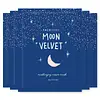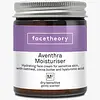What's inside
What's inside
 Key Ingredients
Key Ingredients

 Benefits
Benefits

 Concerns
Concerns

 Ingredients Side-by-side
Ingredients Side-by-side

Water
Skin ConditioningGlycerin
HumectantCaprylic/Capric Triglyceride
MaskingButylene Glycol
HumectantCetearyl Alcohol
Emollient1,2-Hexanediol
Skin ConditioningGlyceryl Stearate
EmollientPEG-40 Stearate
EmulsifyingPEG-100 Stearate
Sorbitan Stearate
EmulsifyingBetaine
HumectantButyrospermum Parkii Butter
Skin ConditioningDimethicone
EmollientSodium Hyaluronate
HumectantPhenoxyethanol
PreservativeSimmondsia Chinensis Seed Oil
EmollientAloe Barbadensis Leaf Extract
EmollientLavandula Angustifolia Extract
Skin ConditioningRosmarinus Officinalis Leaf Extract
AntimicrobialCamellia Sinensis Leaf Extract
AntimicrobialChamomilla Recutita Flower Extract
MaskingSalvia Officinalis Leaf Extract
CleansingHamamelis Virginiana Extract
AntiseborrhoeicCeramide NP
Skin ConditioningHydrogenated Lecithin
EmulsifyingCholesterol
EmollientAcrylates/C10-30 Alkyl Acrylate Crosspolymer
Emulsion StabilisingCarbomer
Emulsion StabilisingXanthan Gum
EmulsifyingPotassium Hydroxide
BufferingSodium PCA
HumectantDisodium EDTA
Parfum
MaskingWater, Glycerin, Caprylic/Capric Triglyceride, Butylene Glycol, Cetearyl Alcohol, 1,2-Hexanediol, Glyceryl Stearate, PEG-40 Stearate, PEG-100 Stearate, Sorbitan Stearate, Betaine, Butyrospermum Parkii Butter, Dimethicone, Sodium Hyaluronate, Phenoxyethanol, Simmondsia Chinensis Seed Oil, Aloe Barbadensis Leaf Extract, Lavandula Angustifolia Extract, Rosmarinus Officinalis Leaf Extract, Camellia Sinensis Leaf Extract, Chamomilla Recutita Flower Extract, Salvia Officinalis Leaf Extract, Hamamelis Virginiana Extract, Ceramide NP, Hydrogenated Lecithin, Cholesterol, Acrylates/C10-30 Alkyl Acrylate Crosspolymer, Carbomer, Xanthan Gum, Potassium Hydroxide, Sodium PCA, Disodium EDTA, Parfum
Water
Skin ConditioningGlycerin
HumectantButyrospermum Parkii Butter
Skin ConditioningGlyceryl Stearate Se
EmulsifyingTheobroma Cacao Seed Butter
EmollientPrunus Amygdalus Dulcis Oil
Skin ConditioningOlea Europaea Fruit Oil
MaskingPropanediol
SolventCetyl Alcohol
EmollientStearic Acid
CleansingPanthenol
Skin ConditioningPrunus Armeniaca Kernel Oil
MaskingDalea Spinosa Seed Oil
MaskingOryza Sativa Bran Oil
EmollientTocopherol
AntioxidantAvena Sativa Kernel Flour
AbrasiveSodium Anisate
AntimicrobialSodium Levulinate
Skin ConditioningSodium Ascorbyl Phosphate
AntioxidantGlyceryl Caprylate
EmollientLactic Acid
BufferingSodium Hyaluronate
HumectantAmorphophallus Konjac Root Powder
AbrasiveCitrus Nobilis Peel Oil 0.485%
MaskingWater, Glycerin, Butyrospermum Parkii Butter, Glyceryl Stearate Se, Theobroma Cacao Seed Butter, Prunus Amygdalus Dulcis Oil, Olea Europaea Fruit Oil, Propanediol, Cetyl Alcohol, Stearic Acid, Panthenol, Prunus Armeniaca Kernel Oil, Dalea Spinosa Seed Oil, Oryza Sativa Bran Oil, Tocopherol, Avena Sativa Kernel Flour, Sodium Anisate, Sodium Levulinate, Sodium Ascorbyl Phosphate, Glyceryl Caprylate, Lactic Acid, Sodium Hyaluronate, Amorphophallus Konjac Root Powder, Citrus Nobilis Peel Oil 0.485%
Ingredients Explained
These ingredients are found in both products.
Ingredients higher up in an ingredient list are typically present in a larger amount.
This ingredient is also known as shea butter. It is an effective skin hydrator and emollient.
Emollients help soothe and soften your skin. It does this by creating a protective film on your skin. This barrier helps trap moisture and keeps your skin hydrated. Emollients may be effective at treating dry or itchy skin.
Shea butter is rich in antioxidants. Antioxidants help fight free-radicals, or molecules that may harm the body. It is also full of fatty acids including stearic acid and linoleic acid. These acids help replenish the skin and keep skin moisturized.
While Shea Butter has an SPF rating of about 3-4, it is not a sunscreen replacement.
Shea butter may not be fungal acne safe. We recommend speaking with a professional if you have any concerns.
Learn more about Butyrospermum Parkii ButterGlycerin is already naturally found in your skin. It helps moisturize and protect your skin.
A study from 2016 found glycerin to be more effective as a humectant than AHAs and hyaluronic acid.
As a humectant, it helps the skin stay hydrated by pulling moisture to your skin. The low molecular weight of glycerin allows it to pull moisture into the deeper layers of your skin.
Hydrated skin improves your skin barrier; Your skin barrier helps protect against irritants and bacteria.
Glycerin has also been found to have antimicrobial and antiviral properties. Due to these properties, glycerin is often used in wound and burn treatments.
In cosmetics, glycerin is usually derived from plants such as soybean or palm. However, it can also be sourced from animals, such as tallow or animal fat.
This ingredient is organic, colorless, odorless, and non-toxic.
Glycerin is the name for this ingredient in American English. British English uses Glycerol/Glycerine.
Learn more about GlycerinSodium Hyaluronate is hyaluronic acid's salt form. It is commonly derived from the sodium salt of hyaluronic acid.
Like hyaluronic acid, it is great at holding water and acts as a humectant. This makes it a great skin hydrating ingredient.
Sodium Hyaluronate is naturally occurring in our bodies and is mostly found in eye fluid and joints.
These are some other common types of Hyaluronic Acid:
Learn more about Sodium HyaluronateWater. It's the most common cosmetic ingredient of all. You'll usually see it at the top of ingredient lists, meaning that it makes up the largest part of the product.
So why is it so popular? Water most often acts as a solvent - this means that it helps dissolve other ingredients into the formulation.
You'll also recognize water as that liquid we all need to stay alive. If you see this, drink a glass of water. Stay hydrated!
Learn more about Water